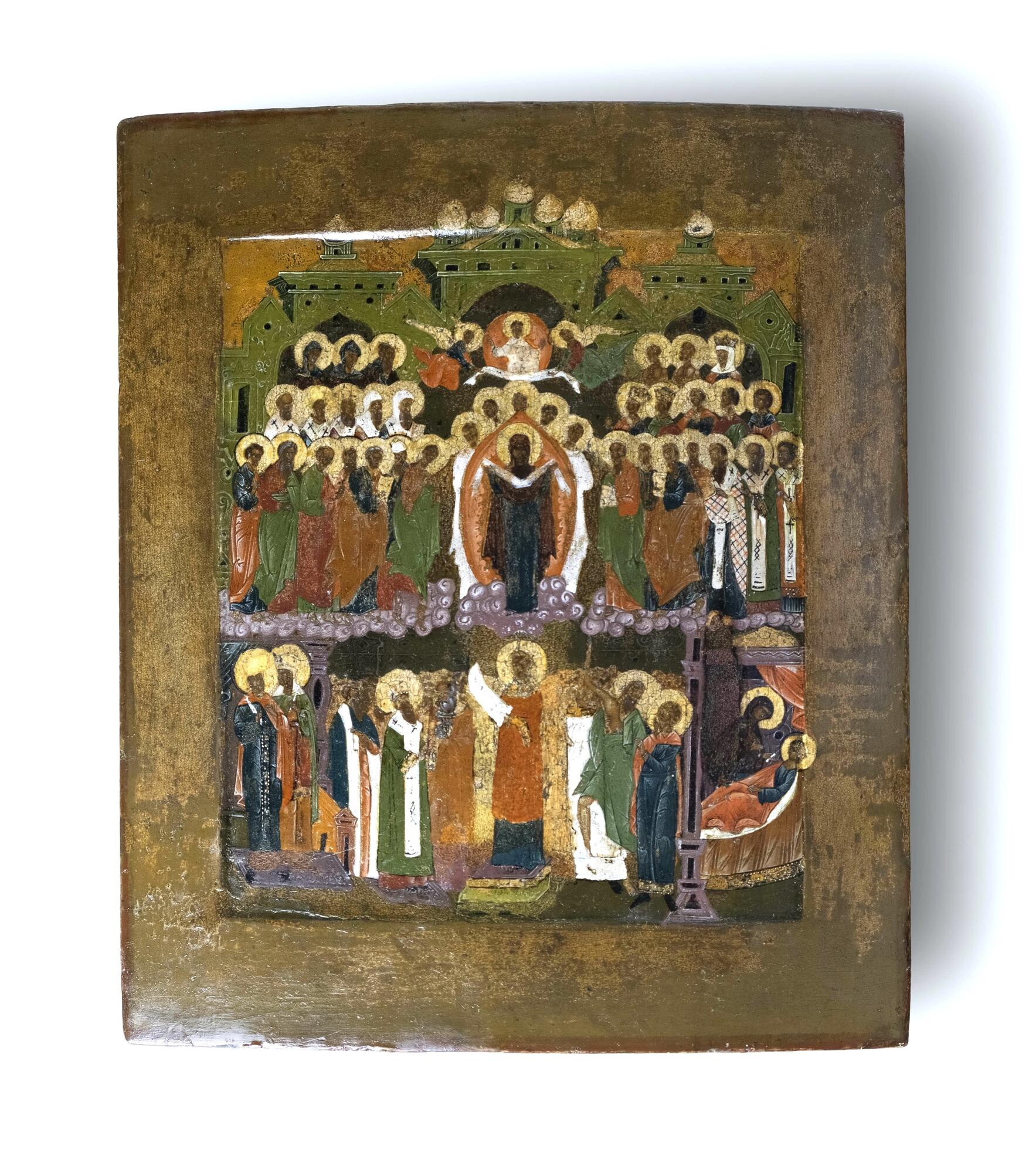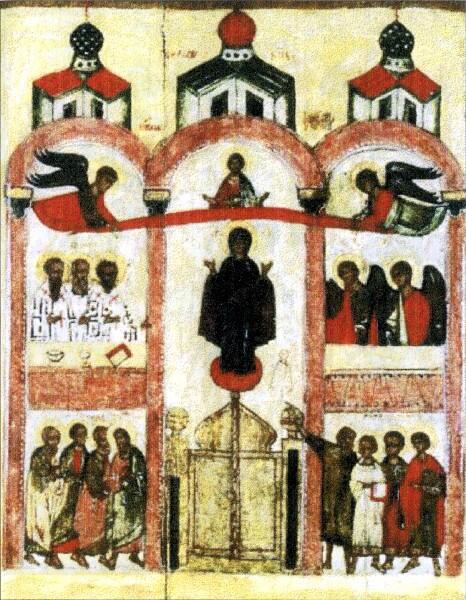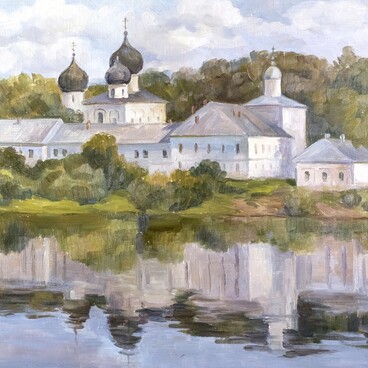The Intercession of the Most Holy Theotokos is celebrated on October 1 (Julian calendar: October 14). It is considered “the most Russian” feast, although it originated due to the events that occurred in the 10th century in Byzantium. Constantinople was besieged by barbaric Rus tribes, and the Byzantine defenders prayed to rid them of the threat in the Blachernae Church, where the robe of the Most Holy Theotokos was kept. Together with others, St. Andrew Blessed Fool-for-Christ with his disciple Epiphanius were praying there. St. Andrew had a vision: the Mother of God in the rays of light, accompanied by John the Forerunner and John the Theologian, tearfully prays for those in the church, and then spreads Her veil, omophorion, over the worshippers.
In the late 10th century, Rus became an Orthodox state, and in the 12th century, Prince Andrey Bogolyubsky established the celebration of the Intercession. Its iconography, judging by the monuments, developed later, in the 14th century.
There are two main canonical versions of the icon of the Intercession.
In the Suzdal version, the Mother of God stands in front of the church, holding Her omophorion over the believers; the basilicas, the church with a round dome and the landscape are reminiscent of Byzantium.
The Novgorod version has its own peculiarities: the Mother of God is inside the church, above the closed Royal Doors. Her hands are either put together in a praying gesture, or hold Her omophorion; floating angels support the veil as well. A church with five domes is traditionally depicted in the background.
In the early images, the face of the Most Pure Virgin was painted slightly turned, in three-quarter view, then painters began to depict Her in full frontal view. Sometimes icon painters combined these two images, and placed new figures among the worshipers.
The presented icon, painted on three boards put together, depicts the interior of the church: the arch of the altar and four large windows can be seen. The Mother of God is surrounded by John the Baptist and saints on the right, and angels, venerable and martyrs on the left. The composition of the image is quite noteworthy: architectural elements are not a means of separating the figures, on the contrary, their unification around the Mother of God is emphasized. Above the procession is the blessing Savior, to Whom the angels lift up the veil.
In the lower part, Tsar Leo the Great and Patriarch Tarasios are depicted on the left, in the center is Saint Romanos the Melodist and on the right — Saint Andrew the Fool with Epiphanius. The style and technique of icon painting allow to attribute this image to the Novgorod tradition of the 19th century. The spaciousness of the image brings it closer to the Suzdal version.
In the late 10th century, Rus became an Orthodox state, and in the 12th century, Prince Andrey Bogolyubsky established the celebration of the Intercession. Its iconography, judging by the monuments, developed later, in the 14th century.
There are two main canonical versions of the icon of the Intercession.
In the Suzdal version, the Mother of God stands in front of the church, holding Her omophorion over the believers; the basilicas, the church with a round dome and the landscape are reminiscent of Byzantium.
The Novgorod version has its own peculiarities: the Mother of God is inside the church, above the closed Royal Doors. Her hands are either put together in a praying gesture, or hold Her omophorion; floating angels support the veil as well. A church with five domes is traditionally depicted in the background.
In the early images, the face of the Most Pure Virgin was painted slightly turned, in three-quarter view, then painters began to depict Her in full frontal view. Sometimes icon painters combined these two images, and placed new figures among the worshipers.
The presented icon, painted on three boards put together, depicts the interior of the church: the arch of the altar and four large windows can be seen. The Mother of God is surrounded by John the Baptist and saints on the right, and angels, venerable and martyrs on the left. The composition of the image is quite noteworthy: architectural elements are not a means of separating the figures, on the contrary, their unification around the Mother of God is emphasized. Above the procession is the blessing Savior, to Whom the angels lift up the veil.
In the lower part, Tsar Leo the Great and Patriarch Tarasios are depicted on the left, in the center is Saint Romanos the Melodist and on the right — Saint Andrew the Fool with Epiphanius. The style and technique of icon painting allow to attribute this image to the Novgorod tradition of the 19th century. The spaciousness of the image brings it closer to the Suzdal version.



